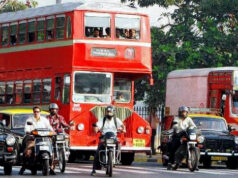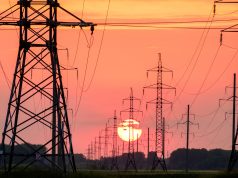In this article, B R Shenoy—one of India’s most prominent free-market economists; talks about the differences in the economic models followed by East and West Germany. Professor Ludwig Erhard—considered to be the architect of the German ‘Economic Miracle’, steered West Germany to a path of economic recovery after World War II guided by a remarkably free-market economy; while East Germany followed the path of communism. The differences between the economic fate and the standard of living of people between these countries were stark and telling. In this article, Shenoy again demonstrates the futility of planning and centrally controlled economies; and remarks that the German experience serves as a reminder to India and its policy-makers of the necessity of economic freedom.
This article was published in the August 15, 1960 issue of ‘The Indian Libertarian’.
A visit to East and West Berlin is, as I now find it, a pilgrimage. I would recommend it to economists who are still wavering on the relative potentialities of freedom and state regulation, to administrators who think that controls are indispensable for accelerated economic growth and to ministers, legislators and politicians who believe that India’s economic salvation is not possible without centrally directed five-year plans.
The contrast between the two Berlins cannot miss the attention of a school child. West Berlin, though an island within East Germany, is an integral part of West German economy and shares the latter’s prosperity. Destruction through bombing was impartial to the two parts of the city. Rebuilding is virtually complete in West Berlin. Vacant plots are often used to raise crops. Buildings still in damaged condition are rare. The residential areas including flats for workers–of varying floor space, they are not shawls–and the shopping centers radiate boom conditions. In East Berlin a good part of the destruction still remains; twisted iron, broken walls and heaped up rubble are common enough sights. The new structures, especially the pre-fabricated workers’ tenements, look drab.
The main thoroughfares of West Berlin are near jammed with prosperous’ looking automobile traffic, the German make of cars, big and small, being much in evidence. Buses and trams dominate the thoroughfares in East Berlin; other automobiles, generally old and small cars, are in much smaller numbers than in West Berlin. One notices cars parked in front of workers’ quarters in West Berlin. The new phenomenon of workers owning cars, which West Berlin shares with U.S.A and many parts of Europe, is unknown in East Berlin. In contrast with what one sees in West Berlin, the buildings here are generally grey from neglect, the furnishings lack in brightness and quality, and the roads and pavements are shabby somewhat as in our cities.
The contrast applies, too, to shop windows. The departmental stores in West Berlin are cramming with wearing apparel, other personal effects and a multiplicity of household equipment, temptingly displayed. Nothing at all comparable is visible in East Berlin. East Berliners visit West Berlin to take back un-noticed whatever goods they can buy. The food shops in East Berlin exhibit cheap articles in indifferent wrappers or containers and the prices for comparable items, despite the poor quality, are noticeably higher than in West Berlin. Walking into a restaurant in East Berlin, one finds the same contrast. The stranger’s doubt whether payments will be received in West marks is soon dispelled. They are accepted with a twinkle in the eye. Coffee and ice-cream cost 3.10 marks; to economise on foreign exchange. Coffee is heavily mixed with synthetics: genuine stuff alone is served in West Berlin and it may be had for half the price.
The frontier between East and West Berlin is nominal. There are no passport formalities as a normal practice. Foreigners in particular, may move across the frontier quite freely. Generally, there are police guards only on the Eastern side. On the underground railway, movement between East and West is virtually free; the change in the uninformed station staff indicates the passion of the frontier. The generally shabby clothes of the people coming in is another evidence of the entry into East Berlin.
Visiting East Berlin gives the impression of visiting a prison camp. The people do not seem to feel free. In striking contrast with the cordiality of West Berliners, they show an unwillingness to talk to strangers, generally taking shelter behind the plea that they do not understand English. At frequent intervals one comes across on the pavements uniformed police and military strutting along. Apart from the white armed traffic police and the police in the routine patrol cars, uniformed men are rarely seen on West Berlin roads.
But Communist party men are eloquent. They have a ready explanation for the contrast between East and West Berlin. West Berlin is part of the dollar empire! For propaganda effect, American capitalists are pouring money into West Berlin: once this blood transfusion ceases, West German economy will collapse. East German prosperity, on the other hand, rests on solid foundation–hard and devoted work of East German workers. Though progress may be slow, it will endure.
This is a grossly misleading explanation. It is not true that West German prosperity rests on foreign capital; nor is it superficial and temporary. Though foreign aid played an important part in speeding up reconstruction in the initial phase, even so, aid between April 1948 and the end of 1954 was of the order of 6.7 per cent of the gross investment of the period. Foreign aid has played a much more vital role in the progress of planning in India; it accounted for 23 per cent of the investment in the public and the corporate private sector in the first three years on the Second Plan. It is much more true to facts to say that, as in the case of Canada, continued German prosperity attracted foreign capital rather than that this prosperity rested on foreign capital. In recent years, there has been a new outflow of German capital, which amounted to DM 1.64 billion (Rs. 185 crores) in 1959, and yet German prosperity continues on the up-trend. Share values in Germany since 1951, keeping pace with the national product, have risen at an annual rate of 28 per cent, in a back-ground of comparative price stability. This would not happen if the economy lacked in soundness and stability.
For an explanation of the contrast of the two Berlins, we must look deeper: the main explanation lies in the divergent political systems. The people being the same, there is no difference in talent, technological skill and aspirations of the residents of the two parts of the city. In West Berlin efforts are spontaneous and self-directed by free men, under the urge to go ahead. In East Berlin effort is centrally directed by Communist planners, who do not lack in determination for speedy progress; the urge to progress is particularly strong, if only to demonstrate the potentialities of communism to foreign visitors of the two Berlins. The contrast in prosperity is convincing proof of the superiority of the forces of freedom over centralised planning. It is difficult to resist the inference that workers in East Berlin, deprived of the incentives of full property rights over the fruits of one’s efforts, are loath to put in their best.
This is reflected in the unabated emigration from East to West Berlin. The emigrants have to leave behind all their assets, save the clothing they wear and such valuables as they may carry unobtrusively. The route they take is usually the underground railway. Once in West Berlin, the emigrants are assured of hospitality at the reception centre at Marienfelds. Depending on choice, job availability and background, they then leave to the several parts of West Germany. The largest bulk of the emigrants is within the age groups of 18 and 45; the urge to leave is great among technicians, professional men and intellectuals. While the population of West Germany is growing, that of East Germany is declining. Communists can never give a satisfactory explanation to this strange phenomenon of workers by self choice, abandoning their paradise, leaving behind kith, kin and possessions to start life all anew is a decaying community dominated by capitalist exploiters.
The flow of traffic, human and financial, is pre-dominantly one way, from East to West Berlin. This is reflected in the glut of supply of East makes and in the exchange rate in the free market. One West mark buys 4 2∕4 East Marks, the official rate being one to one. Conversion at the free rate may be effected at banks or money changes at important railway stations in West Berlin. This explains the twinkle in the eye when East Berliners receive payments in West Marks at the official rate.
Theaters, news-stands and book-shops in East Berlin exhibit home products and propaganda material on the achievements of communism. For a breath of fresh air and for news, literature and amusements of the free world East Berliners visit West Berlin. Out of sympathy for them, Bonn and West Berlin subsidize cinema houses to permit their accepting payments at par in East Marks, the amount of subsidy being in the order of 10 million marks a year.
The contrast in achievements, which has widened with time, is a heavy strain on communist nerves, and, doubtless, is a factor in the ‘Berlin Problem.’ To begin with East Berlin was better fed and clothed than West Berlin. With the coming of Professor Erhard’s free market policies in 1948–when he threw “into the waste paper basket, in one swoop, hundreds of decrees promulgating controls and prices:–West German economy began to boom and soon overtook East Germany.
Statistics of West German progress testify eloquently the superiority of the forces of freedom. The gross national product of West Germany expanded at an annual rate of 17 per cent during the last decade–a world record for a sustained rise at this high rate–and West German wages rose, during the same interval, by about 90 per cent. The international payments of the country were chronically in deficit, calling for doles, when ‘planning’ prevailed; since the restoration of freedom to the producer and the consumer, the payments position has shown rising surpluses. German exports forging ahead from the fifth to the second place in the world.
That an innate conflict exists between freedom and progress is a delusion which is clouding the vision of policy makers in many countries, including our own. Policies ensuring economic freedom, in every case, have rescued economies from semi-stagnation to which controls and statism had condemned them. The examples of West Germany, Belgium, Switzerland, Italy, Japan, Hong-Kong and, more recently, France demonstrate this. West Germany has achieved, in less than ten years, more economic well-being for the citizen after 40 years of ruthless regimentation. Communism makes for sectoral, not general progress, significantly in areas where freedom is allowed full play as in the sciences.
You can access the original article here. Visit indianliberals.in for more works by Indian Liberals dating back to the 19th Century.
Post Disclaimer
The opinions expressed in this essay are those of the authors. They do not purport to reflect the opinions or views of CCS.






